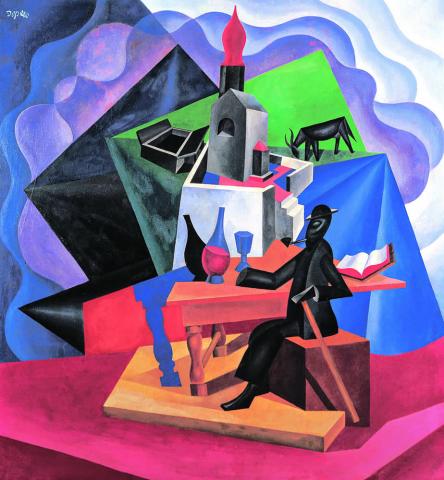A brief Appendix, written for an essay on "electronic Futurism" by the painter Tina Saletnich.
I Included the full text I had originally written, cause this is not paper, so there is no waste putting in things that they are unrelevant for a painter essay, but more interesting on the electronic side of the arts.
The electronic Futurism is an artistic movement officially born with my "Electronic Futurism Manifesto", written and published online in 1996.
Can an artwork conceived to be represented on a screen be considered art? Can a piece of paper with ink on it be considered art? It could be a great poem: in this case Yes.
It could be your shopping bill, in which case NO (then, well, I wouldn't be surprised that someone would one day, calling "magnificent artwork", following some bizarre trend of contemporary art).
I don't want to dwell on the difference, or no difference between art and technique, the vortices from Shellingh, on the concept of art in the romance, the Greek concept of "tekne".
Why art and technique? Because the two fields meet continuously: from an artistic experiment, can give rise to techniques that will be used in commercial contexts, a technique used normally in commercial applications, can be used in a multitude of artistic applications
Since we are in the context of "electronic Futurism", let's start with this short quote from Fortunato Depero:
"I had a flash of intuition: that is to apply to the theater's plastic solutions every mechanical means already existing at still primitive state in the puppet Theatre, and So the plastic balls were born... Over time
Which is just as important as the Ethernal Lord, they will develop, they will bring dances and dramas of more perfect quality and theatrical magic.The characters will not be wood only.
Hard and square.
But in fabric, rubber.
Tin: They will suffer all the lights.
roundness transparencies and elasticity.
They will snap, jump with surprise springs and with the application of all the pyrotechnic means they will be luminous as a miracle».
Why the theater? Given that a real "futurist cinema" never existed, the theatre is the artistic multimedia experience par excellence: With regard to scenographies, combines sculpture, painting, video, projections.
As for the sound experience, it combines music, vocal performances, orchestral performance.
As far as acting is concerned, it combines the performances of actors, puppets, automata, interactive elements.
It is in my view that this is closer to the modern and almost all-encompassing conception of electronic art, or of "electronic futurism".
